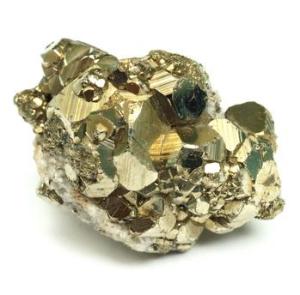北京时间7月25日消息,黄铁矿提供了地球演变过程中转折点的有价值信息,该转折点发生在数十亿年以前。

黄铁矿把地球演变过程中的转折点“快照”下来
科学家正在复原黄铁矿的古貌用于揭示过去发生的地质事件,这一铁矿由于具有独特的金属光泽,因此,被戏称为“傻瓜金”。
详细分析黄铁矿后,科学家形成了对24亿年前地球的新认识。这个时期内,氧气由早期细菌放出,影响动植物体的新形态,最终改变地球上海洋和大气的新面貌。
黄铁矿形成之时,它的组分如同是对这一时期地质事件的快照。分析不同时期“傻瓜金”的组分,科学家可以获取地球演变过程中的很多线索,例如,环境条件(比如大气氧分)如何影响复合物的形成过程。
最新的研究表明,细菌在当时是主要的生命体,它不影响黄铁矿的早期组分。这一结果有悖于先前的认识,让科学家对这一过程有了更清晰的了解。
广义上说,他们的发现让科学家对大充氧时期地质状况有了更好的理解,这一地质状况可以说明海洋和大气如何演变。
这项研究由自然环境研究理事会和爱丁堡基础科学和工程协会共同资助,已发表在科学Science期刊上。
该研究的指导者伊恩巴特勒博士称,为了理解复合物如何形成,我们利用相关技术探究仅靠矿物成分认识不到的地球演变过程。关于黄铁矿的新信息让我们拥有更加精确的方法去分析地球早期的演变,并将在我们生存的星球如何形成的问题上提供更详实的信息。
参与研究的 Romain Guilbaud博士称,地球演变过程中记录在远古矿石的信息如何被诠释?我们的发现能更清晰地诠释“刻”在矿石上的演变信息。(生物探索译 Pobee)
生物探索推荐英文原文
Fool's gold is providing scientists with valuable insights into a turning point in Earth's evolution, which took place billions of years ago
Scientists are recreating ancient forms of the mineral pyrite -- dubbed fool's gold for its metallic lustre -- that reveal details of past geological events.
Detailed analysis of the mineral is giving fresh insight into Earth before the Great Oxygenation Event, which took place 2.4 billion years ago. This was a time when oxygen released by early forms of bacteria gave rise to new forms of plant and animal life, transforming Earth's oceans and atmosphere.
Studying the composition of pyrite enables a geological snapshot of events at the time when it was formed. Studying the composition of different forms of iron in fool's gold gives scientists clues as to how conditions such as atmospheric oxygen influenced the processes forming the compound.
The latest research shows that bacteria -- which would have been an abundant life form at the time -- did not influence the early composition of pyrite. This result, which contrasts with previous thinking, gives scientists a much clearer picture of the process.
More extensively, their discovery enables better understanding of geological conditions at the time, which informs how the oceans and atmosphere evolved.
The research, funded by the Natural Environment Research Council and the Edinburgh Collaborative of Subsurface Science and Engineering, was published in Science.
Dr Ian Butler, who led the research, said: "Technology allows us to trace scientific processes that we can't see from examining the mineral composition alone, to understand how compounds were formed. This new information about pyrite gives us a much sharper tool with which to analyse the early evolution of the Earth, telling us more about how our planet was formed."
Dr Romain Guilbaud, investigator on the study, said: "Our discovery enables a better understanding of how information on the Earth's evolution, recorded in ancient minerals, can be interpreted."







